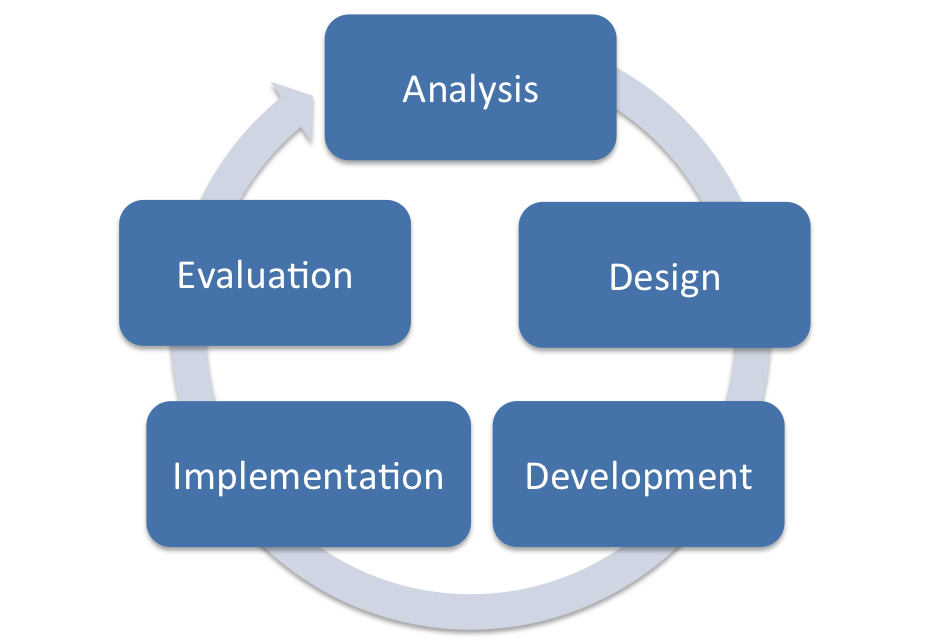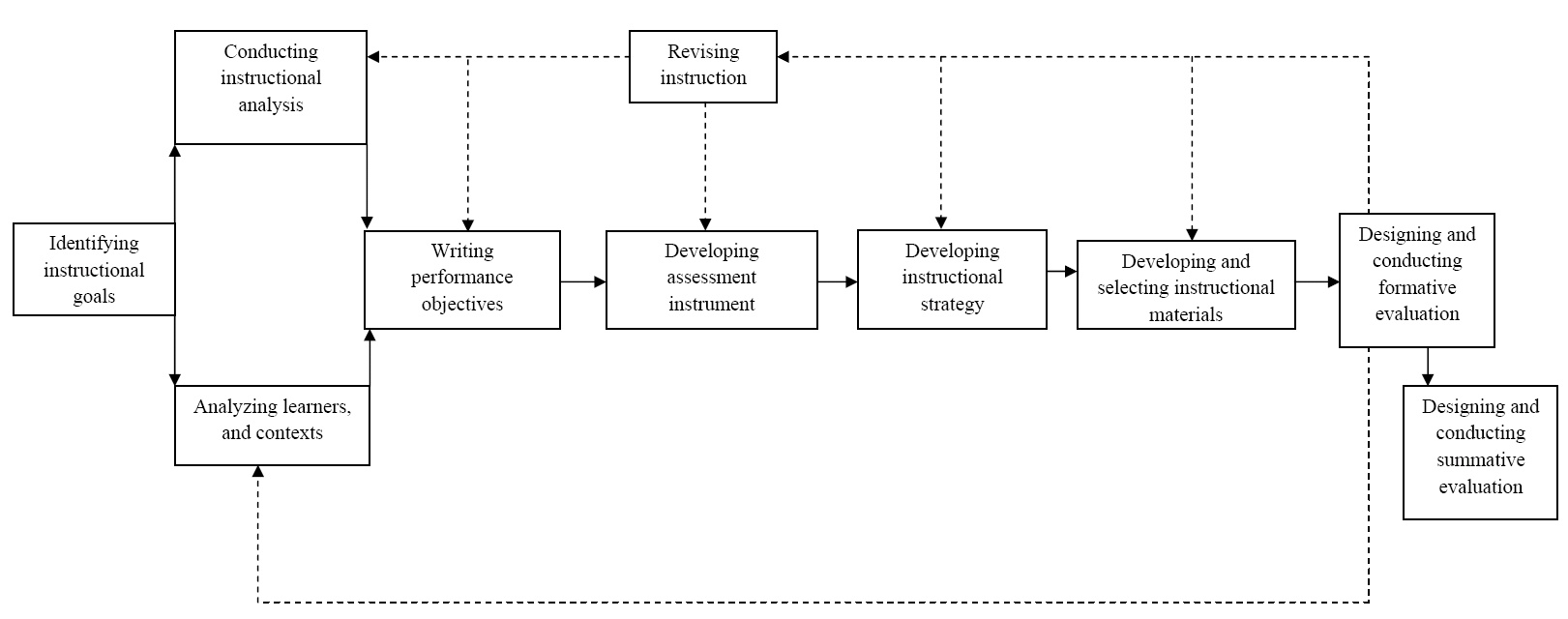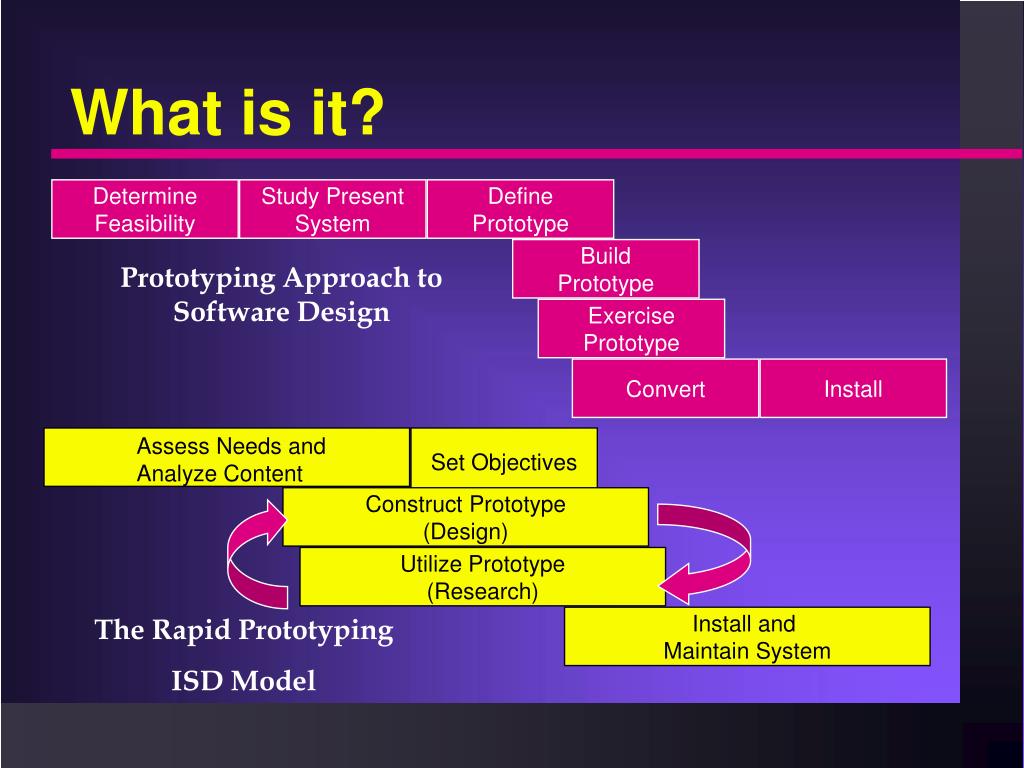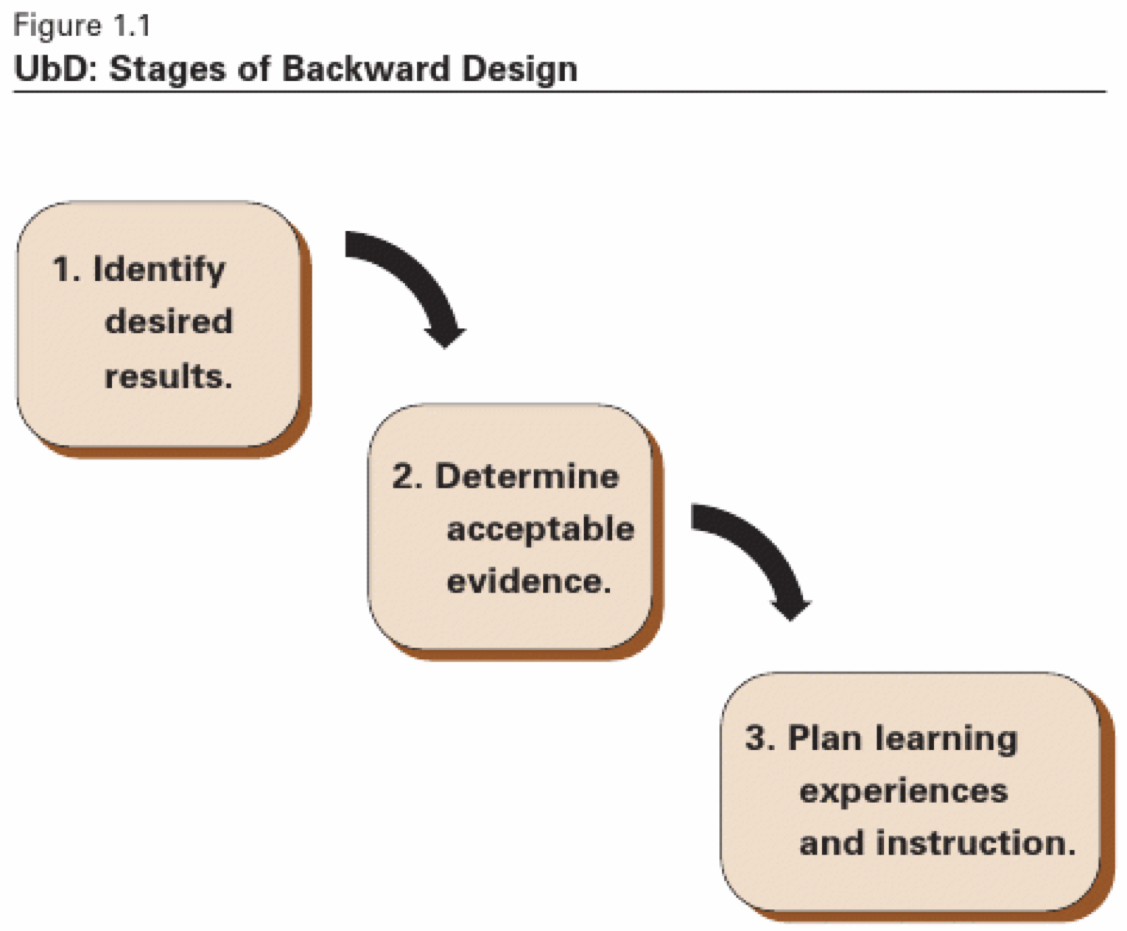Esta es una lista de los Modelos de Diseño Instruccional más comunes. Les recuerdo que en la literatura hay otros modelos adicionales.
Modelo ADDIE (1975) (Falta referencia)

Modelo Dick and Carey: Dick, W., Carey,L. and Carey, J. (2005) [1978]. The Systematic Design of Instruction (6th ed.). Allyn & Bacon. pp. 1–12.

Dick and Carey actual
 –
–
Modelo ASSURE: Heinrich, R., Molenda, M., Russell, J. D., & Smaldino, S. E. (1999). Instructional media and technologies for learning. Upper Saddle River, NJ: Prentice-Hall.

Modelo Gerlach & Ely: Gerlach, V. S., & Ely, D. P. (1980). Teaching & Media: A Systematic Approach (second ed.). Englewood Cliffs, New Jersey: Prentice Hall, Inc.
![Serious Game Theory [Katrin Becker, PhD]](https://www.minkhollow.ca/becker/lib/exe/fetch.php?w=&h=&cache=cache&media=resources:illustrations:slide7_demo.png)
Modelo Hannafin & Peck: Hannafin, M. J., & Peck, K. L. (1988). The design, development, and evaluation of instructional software. New York, London: Macmillan Collier Macmillan.![Serious Game Theory [Katrin Becker, PhD]](https://www.minkhollow.ca/becker/lib/exe/fetch.php?w=&h=&cache=cache&media=resources:illustrations:slide9_demo.png)
Modelo Knirk & Gustafson: Knirk & Gustafson (1986). Instructional technology: A Systematic approach to Education.

Modelo de Jerold Kemp (Morrison, Ross & Kemp): Kemp, J. E. (1985). The instructional design process. New York: Haper and Row.

Rapid Prototyping Model: Tripp, S. D., & Bichelmeyer, B. (1990). Rapid protoyping: An alternative instructional design strategy. Educational Technology, Research and Development, 38(1), 31-44.

Bergman & Moore Model: Bergman, R.E. & Moore, T.V. (1990). Managing interactive video-multimedia projects (1st ed.). Englewood Cliffs, New Jersey: Educational Technology Publications, Incorporated
![6321bmcooperativespring2011 [licensed for non-commercial use only] / Bergman and Moore Model Overview](https://6321bmcooperativespring2011.pbworks.com/f/1299565350/bergman-moore-model.png)
Successive Aproximation Model (SAM) – Allen, M & Sites, R. (2012). Leaving ADDIE for SAM : an agile model for developing the best learning experiences. Alexandria, Va:American Society for Training and Development.

Understanding By Design (McTighe, J., & Wiggins, G. (1999).Understanding by Design professional development workbook. Alexandria, VA: ASCD.
En realidad este es un modelo de desarrollo (diseño) curricular que usa una técnica conocida como “Backward Design”

Pebble in a Pond Mode – Merrill, M. D. (2002). A pebble-in-the-pond model for instructional design. Performance Improvement, 41(7), 39-44.
